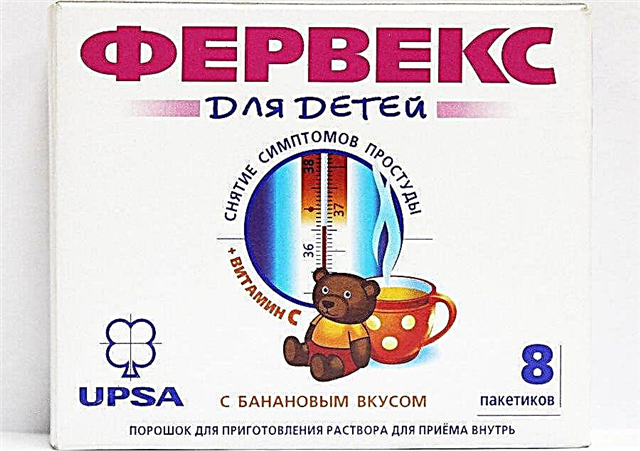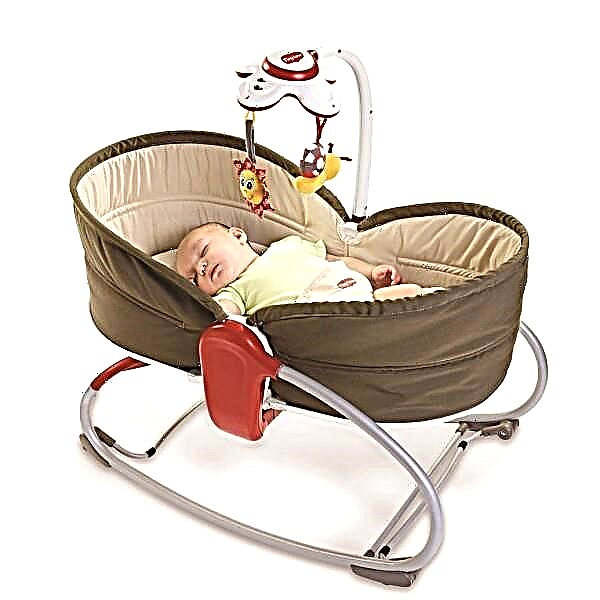
A newborn baby spends most of its time asleep. So nature itself helps him to go through a period of adaptation to a new world. In a dream, all processes are softer. A newborn is awake quite a bit - no more than two hours a day. His awakenings are most often associated with natural needs - the desire to eat, wet diapers or abdominal pain due to colic. You can and should skillfully use short periods of wakefulness.
For the development of the baby, special gymnastics will be useful, which is allowed literally from the very first days of life. We will tell you about how and why to do it in this article.


Benefit
The benefits of gymnastics for newborns raise few questions from anyone: exercise is never harmful if done correctly. For babies who have just been born, gymnastic exercises are of particular importance.
After nine months in the womb, spent in rather cramped conditions (it was especially cramped in the last 2 months before childbirth), there is nothing surprising in the physiological hypertonicity of the muscles, which is recorded in almost all infants. Exercise helps to quickly get rid of excessive muscle tension, the baby gets the opportunity to grow and develop physically in more comfortable conditions.
Gymnastics is not just a set of exercises. In any case, the baby sees her differently: for him it is an opportunity for close tactile contact with his mother. Its absence or deficiency leads to poor emotional development of the baby, to a slowdown in his mental development.

Gymnastics improves blood circulation, which is good for appetite, digestion and sleep quality: children sleep more deeply and peacefully. Muscles develop, joints and ligaments are strengthened. All this will be sure to come in handy for the child when he begins to master coups, crawling, walking. Dr. Komarovsky, whose opinion carries weight for many mothers, believes that gymnastics and hardening from the very first days are the key to healthy and strong immunity in the future.
Contraindications
Congenital heart defects, hemangiomas, and the presence of a large umbilical or inguinal hernia are considered relative contraindications to gymnastic exercises for newborns. Sometimes doctors recommend refraining from gymnastic exercises for certain congenital diseases of the joints and the musculoskeletal system, for example, with immaturity of the hip joints, gymnastics should be done special, therapeutic, and only when the baby grows up a little.
Gymnastics is not done if the child has vomiting, diarrhea, fever.
Be sure to ask a question about the possibility of training a pediatrician - he will visit you the very next day after discharge from the hospital. For the vast majority of babies, doctors allow such classes, and with pleasure: a mother's desire to develop her child is always commendable.

General principles
If there are no contraindications, it is advisable to start working with the child from 1.5-2 weeks. By this time, the baby is quite well adapted to the new habitat. A mother who intends to do gymnastics with her child needs to know some general rules that will help to achieve maximum benefit and make the process of exercise itself interesting and enjoyable for everyone.
- Work with your child every day. Only daily gymnastics, and not a couple of exercises from time to time, will be useful and effective.
- For practice, use a flat surface that will not collapse under the baby's weight - a table, tabletop, changing table or dresser lid.
- Repeat each exercise no more than 3-5 times, this is quite enough so that the baby does not get tired.
- Turn the activity into a game - with a verse, a song and a joke. The kid will love it.
- Do gymnastics in a ventilated room, in which it is not hot (no more than 21 degrees Celsius), take off diapers and all clothes during gymnastics. In summer, if it's warm and not rainy outside, you can do gymnastics outdoors.
- You cannot force a child to do exercises. If the baby is naughty and crying, do not continue to exercise. It will be possible to return to gymnastics when the child is in the mood for play and communication.
- When composing a gymnastics program for your child, choose only those exercises that are suitable for his age, because excessive physical activity can harm.
- Do exercises that promote symmetrical development of the paired muscles to prevent the dominance of unilateral muscle activity.
- Set the duration of the lesson to 10 minutes. For a start - no more than 2 minutes, then every two days, increase the time by one minute until you reach a ten-minute "workout".


Charging can be done several times a day:
- after waking up and morning hygiene procedures - morning;
- gymnastics in combination with restorative massage - in the morning;
- some relaxing exercises as part of a soothing evening massage before swimming.


Perform gymnastics on warmed up muscles, even if you do not even carry out preliminary massage: lightly rub the arms, legs, stomach and back with your palms before proceeding to the set of exercises.
Also, make sure that the child is not hungry at the time of class, as hunger will distract him, the baby will start crying. It is dangerous to exercise and immediately after eating - this can provoke profuse regurgitation.
It is optimal to schedule a lesson an hour and a half after a meal or an hour before the next meal.
Classic charging for babies from 0 to 3 months
Classic exercises can be combined with massage, air baths. Well, the techniques of classical gymnastics are suitable for the morning class, which the mother conducts after washing, treating the navel. Classical gymnastics is performed in a static position: the child is in a stable position in space. This is the main difference between the classic complex and the dynamic one, which we will discuss below.
Mom can be advised on a note of several play exercises that will definitely be useful to the mother of a nursing baby from 2 weeks to 2 months.
- "Caterpillar". Starting position - lying on your stomach. Mom brings her palm to the baby's feet and gently presses on them with a forward movement. The kid reflexively crawls forward. This is how the muscles of the abdomen, legs, back are trained. Crawling is practiced from an early age precisely for this, and not at all in order to teach a child to crawl, as many think.

- "Embryo". The pose that the child needs to take during this exercise is quite simple and familiar to him. In it, the child was in mother's womb. Lay the baby on its side, bring your knees to your stomach, and hold the arms against your chest. Tilt your baby's head slightly with your chin down towards your chest. Hold it in this position for 15-20 seconds, then release it. Repeat 4-5 times.
- "Stompotun". Lift the baby, grabbing it under the armpits, let your toes rest against the table surface and move the baby forward. He will reflexively make "steps" on the table. Do not relax your hands, the weight of the child should in no case rest on his fragile limbs and spine.
- "A bike". Starting position - lying on your back. Take your baby's legs in your hands above the ankle and make the movements typical of cycling.
- "Worm"... Starting position - lying on your side. Run your fingers along the baby's spine without applying pressure or pressure. Reflexively, the baby will arch the back, and then return it to its original position again.
- "Athlete". Take your baby's hands in your own hands. Bring them to your chest, spread them in different directions, then lift them up and lower them along the body. At first, increased muscle tone will significantly limit the ups and downs, make sure that the child is not in pain.


If the child is more than two months old and his age is approaching 3 months, it is quite possible to complicate the classical gymnastics program with the following exercises:
- "Dolphin". Place your palms under the baby's chest and abdomen, for a few seconds lift him low on your palms above the surface of the massage table. All muscle groups, especially the cervical, back and abdominal muscles, will tighten. The back will bend, and the head will rise higher. Then gently lower the baby back to its original position. Repeat 3-4 times.
- "Skier". Put the baby on the back, take one leg by the foot, gently straighten it at the knee and slide the foot of the crumbs along your palm with a sliding motion. Then do the exercises for the other leg in the same way. It will be like a skier running.
- The next exercise is quite difficult, it is recommended to start doing it no earlier than 3 months of age. It is called "Spindle". Its essence is in training the oblique muscles of the abdomen and long muscles of the back. Place the baby on the back. Grab the legs with one hand, with the other pull the right handle while moving the legs to the left. The baby will roll over onto his stomach. Then practice flips across the opposite side.


You can add fitball exercises - both on the back and on the stomach.
Dynamic charging
This type of gymnastics for babies belongs to the developmental category. Exercises are used more complex, they are all carried out in motion with a change in the position of the child's body in space. Swinging, rotating help not only to develop the muscular system, but also effectively train the vestibular apparatus of the child.
Dynamic exercises have more contraindications than classical ones, and therefore, in addition to consulting a doctor, it is advisable for parents to get a couple of lessons from an exercise therapy specialist. This type of gymnastics is not indicated for torticollis, weakness and underdevelopment of the joints. To begin with, the mother can visit the exercise therapy room in the polyclinic, go through several group sessions with the baby, only after that it is possible to use the acquired skills at home - of course, with caution and adherence to the exercise technique.
Dynamic gymnastics programs can be different, here are just a few exercises for home use.
- "Pilot". Place your baby on your stomach. With one hand, grip the wrist tightly around the crumbs, and with the other, the leg in the lower leg area on the same side. Lift the baby for a few seconds and gently lower it back. Repeat the exercise with the arm and leg on the other side.


- "Climber". Grab the baby's legs with your hands just above the ankles, slightly lift the baby by the legs so that the legs are in the air, and the head is on the table. Shake it lightly and gently lower it back down.
- "Airplane". Everyone knows this exercise. It is better to entrust his execution to dad, his hands are stronger than mom's. With one hand, take the baby lying on his stomach under the chest, with the other - under the tummy on the opposite side. The baby should be well fixed. Roll it around the room, imitating the sound of an airplane, change the "flight" altitude, you can circle the baby several times. You shouldn't throw the child into the air and catch him, as some representatives of the older generation do, this creates an excessive load on the spine and pelvic bones.
Dynamic gymnastics, according to supporters of its use, allows not only to develop a baby, but also to strengthen psychological trust between a child and an adult. Many experts recommend starting it for newborns as early as 1 month.
Such gymnastics also has its ill-wishers, who are sure that there is no point in exposing the child to traumatic danger. Whether to practice or not is up to you. In training, exercise therapy specialists and training video lessons, of which there are a great many on the Internet, will help.


Helpful tips and feedback
Gymnastics by itself will not bring tangible benefits to the child if the parents do not create normal conditions for exercising: in the room you need to humidify the air (recommended humidity parameters are 50-70%), monitor the air temperature. There should be no drafts during the lesson.
Great results are achieved by parents who combine gymnastics with cool baths according to the method of Dr. Komarovsky, with air baths, with other restorative techniques, as well as with art therapy methods (music therapy, fairy tale therapy).


Parents, who from the first days began to do gymnastics to their child, by the first birthday of the baby usually boldly assert that their children are less likely to get sick, develop better, and learn age-related skills faster. Many of them, according to reviews, walk quite confidently a year.
Gymnastics, according to mothers (and pediatricians completely agree with them), expands not only the limit of physical capabilities, but also increases mental and intellectual development, contributes to the earlier development of the little one’s speech, increases his ability to learn and memorize.
In the next video, physical rehabilitation therapist Olga Yashnaya will teach young parents special physical exercises for the little ones and tell why they are so important to your baby.



